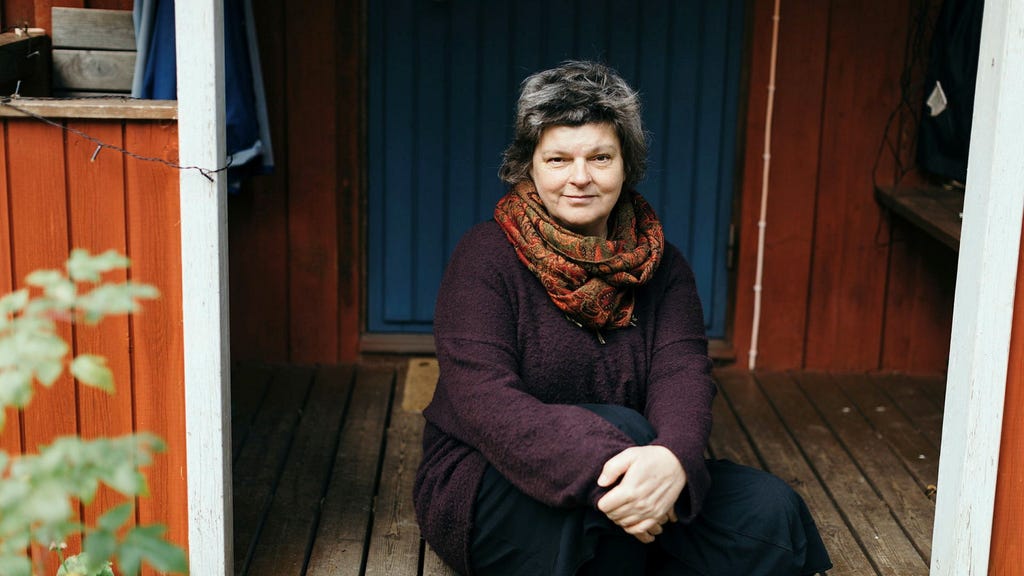Agneta Enckell’s ”obeskrivligheten,” the concluding part of her ”Tillägnadens trilogi,” is a collection of poetry characterized by its gentle, airy quality. The poems, often written in lowercase and featuring ample white space, create a sense of calm and quiet contemplation. Despite this lightness, the collection delves into profound emotional depths, exploring the complexities of familial relationships and the shadows of the psyche. Dedicated to the poet’s parents, following previous installments focused on her husband and son, the trilogy as a whole forms a poignant exploration of love, memory, and the inherent limitations of language in capturing the essence of human experience. This final volume turns towards Enckell’s parents, “To my Father with the Jewish in his gaze/ to my Mother with the adventurous,” capturing the essence of their beings through poetic observation and reflection.
The collection’s airy quality is achieved through several stylistic choices. The absence of titles, generous spacing between lines, and the omission of punctuation marks like commas, question marks, and periods contribute to a sense of continuous flow and breath. This rhythmic breathing is central to the collection’s aesthetic and thematic concerns. It is less about literal respiration and more about creating a sense of rhythm and pause, allowing the reader to move through the poems with a sense of ease and openness. This effect is further enhanced by the poet’s judicious use of capitalization, parentheses, dashes, and colons to create pauses and shifts in emphasis, mimicking the natural rhythms of breath. Enckell masterfully avoids cliché and sentimentality through her precise language and meticulous attention to detail, transforming potentially generic themes of breath and the ineffable into tangible poetic expressions.
Enckell’s poetic language is finely tuned to evoke a sense of ethereal beauty. She crafts images of buildings submerged in water and words disappearing between lines, prompting reflection on the nature of existence and the elusive quality of meaning. The poems unfold through subtle repetitions and shifts in phrasing, causing meanings to evolve and resonate throughout the collection. For instance, the phrase ”(en obeskrivlig rörelse över tröskeln)” appears early on, later transforming into ”Allt börjar med en obeskrivlig rörelse över Tröskeln.” This seemingly slight alteration in capitalization introduces a nuanced shift in meaning, inviting the reader to contemplate the subtle yet significant transformations that occur within language and experience.
The trilogy as a whole, with ”obeskrivligheten” as its culmination, examines the intricacies of familial relationships. It is an attempt to encapsulate the lives and memories of the poet’s parents, herself, and their shared history. While recognizing the impossibility of fully capturing the totality of these experiences, the poems strive to express love and connection. The dedication itself acts as a form of claiming, of making these individuals and their influence a part of the poet’s own artistic narrative. This reciprocal dynamic between giving and taking, expressing and possessing, enriches the poems and imbues them with a sense of weight and significance. The reader is invited to follow the poetry’s breath as it ”blows through open doors and closed,” experiencing the subtle interplay between presence and absence, memory and lived experience.
While the collection primarily evokes a sense of lightness and airiness, it also explores deeper, more complex themes. Enckell delves into the shadows of the psyche, probing the depths of human emotion and grappling with difficult or uncomfortable truths. The poems’ brevity, combined with the poet’s deliberate stylistic choices, creates a space for introspection and contemplation. The lack of traditional punctuation allows the lines to flow into one another, blurring the boundaries between conscious thought and subconscious awareness. Passages like ”om Det är din obeskrivliga SkaM: att Det du begär inte kan vara Ditt” reveal the poet’s willingness to confront the darker aspects of human experience, exploring feelings of shame and unfulfilled desire. The use of capitalization and unexpected typography further emphasizes the emotional weight of these lines, disrupting the otherwise smooth flow of the poems and creating a sense of disquiet.
While some of Enckell’s imagery might initially appear simplistic, her skillful manipulation of language and her ability to introduce subtle twists prevent the poems from becoming overly sentimental or cliché. The collection’s concise format encourages a quick reading, but it truly rewards those who take the time to reread and savor its nuances. Moreover, ”obeskrivligheten” is best appreciated within the context of the entire trilogy. By reading the three collections together, one can fully appreciate the intricate web of connections and the interplay of themes that emerge across the poet’s exploration of family, love, and the search for meaning. The spaces between the poems, and the cross-currents of meaning that flow between them, create a rich and rewarding reading experience, inviting the reader to engage with the complexities of human experience in all its fragility and beauty. The trilogy, with its evolving focus on different family members, creates a multi-dimensional portrait of the relationships that shape us and the enduring power of love in the face of loss and the passage of time.














